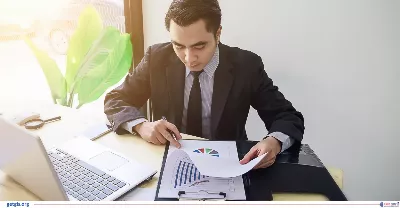Austria's Population Set for Growth as Migration Gains Momentum
Updated On
-
Copy link
-
-
Austria's Population Soars: Immigration Drives Growth.
Austria is on track to exceed a population milestone, projected to surpass ten million residents by 2080. This upsurge is primarily attributed to immigration, according to recent projections from Statistik Austria.
The current population of 9.1 million is forecasted to grow to 9.7 million by 2040 and subsequently reach 10.2 million by the turn of the century. Despite this significant increase, concerns arise over the marginal growth expected in the working-age populace, potentially impacting the nation's labor force.
Challenges Amid Demographic Shifts
As Austria braces for population growth, it grapples with the repercussions of an aging demographic. The percentage of individuals aged 65 and above is expected to rise from the current 19.5% to 26.6% by 2040. This demographic transition poses formidable challenges, straining pension and healthcare systems, while exacerbating shortages in skilled workers and labor across various sectors.
Tobias Thomas, General Director of Statistics Austria, underscores the strain this demographic shift places on the nation's social infrastructure, particularly on funding pensions and healthcare systems. Moreover, he highlights the exacerbation of shortages in skilled labor due to this demographic shift.
Imbalance in Workforce Dynamics
The demographic disparity between working-age individuals and retirees becomes more apparent over time. From a historical standpoint of six working-age individuals for every retiree in 1950, the ratio has dramatically decreased to only three today. Projections indicate a further decline to two working-age individuals per retiree by 2040. This impending shift amplifies concerns about the sustainability of the labor force.
By 2037, a significant decrease of 268,000 individuals within the working-age bracket is anticipated, signaling a potential strain on various industries. Despite fluctuations, projections foresee a subsequent rise to approximately 5.34 million working-age individuals by 2080.
Sectoral Concerns Amid Labor Shortages
The burgeoning population and changing demographics exacerbate labour shortages across key sectors. Industries such as construction, automotive, hospitality, sales, and logistics are already grappling with significant deficiencies in skilled workers. The looming challenges in workforce availability and the demographic imbalance necessitate strategic interventions to bridge skill gaps and sustain economic growth. Austria faces a critical juncture as it navigates the complex interplay between demographic shifts, immigration dynamics, and the demands of a swiftly evolving labor landscape. Strategies aimed at bolstering the workforce, fostering skill development, and addressing sectoral sh ortages are imperative for the nation's sustained prosperity amidst these demographic transformations.
Embarking on a Career Journey with │╔╚╦├┐╚Ň┤ˇ╚Ř in Austria!
Amid Austria's efforts to expand career prospects, individuals looking for fresh opportunities in this nation must navigate the dynamic terrain with expert assistance. │╔╚╦├┐╚Ň┤ˇ╚Ř, a top-tier immigration consultancy, emerges as the perfect ally for those seeking to establish themselves in Austria's job market. Benefit from profound expertise and steadfast assistance at │╔╚╦├┐╚Ň┤ˇ╚Ř, your trusted advisor in maneuvering through the evolving immigration scene to transform your ambitions into accomplishments. Why limit your dreams? Let's make them a reality together. Schedule a Free Consultation Now!
FAQs
Q1: How is the demographic shift impacting Austria's workforce?
Answer: The ageing demographic is expected to strain the labour force, exacerbating shortages in skilled workers and labour across various sectors.
Q2: Which key sectors are experiencing labour shortages in Austria?
Answer: Sectors such as construction, automotive, hospitality, sales, and logistics are currently grappling with significant deficiencies in skilled workers.
Q3: What strategic interventions are necessary to address Austria's labour shortages?
Answer: Implementing measures to bridge skill gaps, fostering workforce development, and addressing sectoral deficiencies are crucial strategies to sustain economic growth amidst demographic shifts in Austria.
Q4: What is Austria's migration rate?
In 2023, the current net migration rate stands at 2.209 per 1000 population, marking a decrease of 31.76% from 2022. Comparatively, Austria's net migration rate was 3.237 per 1000 population in 2022, showing a decline of 24.12% from 2021. In 2021, Austria had a net migration rate of 4.266 per 1000 population, reflecting a 19.42% decrease from 2020.
Q5: Does Austria offer visa-free entry for Indians?
No, Indian citizens need an Austrian Schengen visa for entry. As of July 2023, there's no visa-free or visa-on-arrival provision for Indians in Austria. Hence, it's crucial to complete the visa application procedure before your intended visit.




